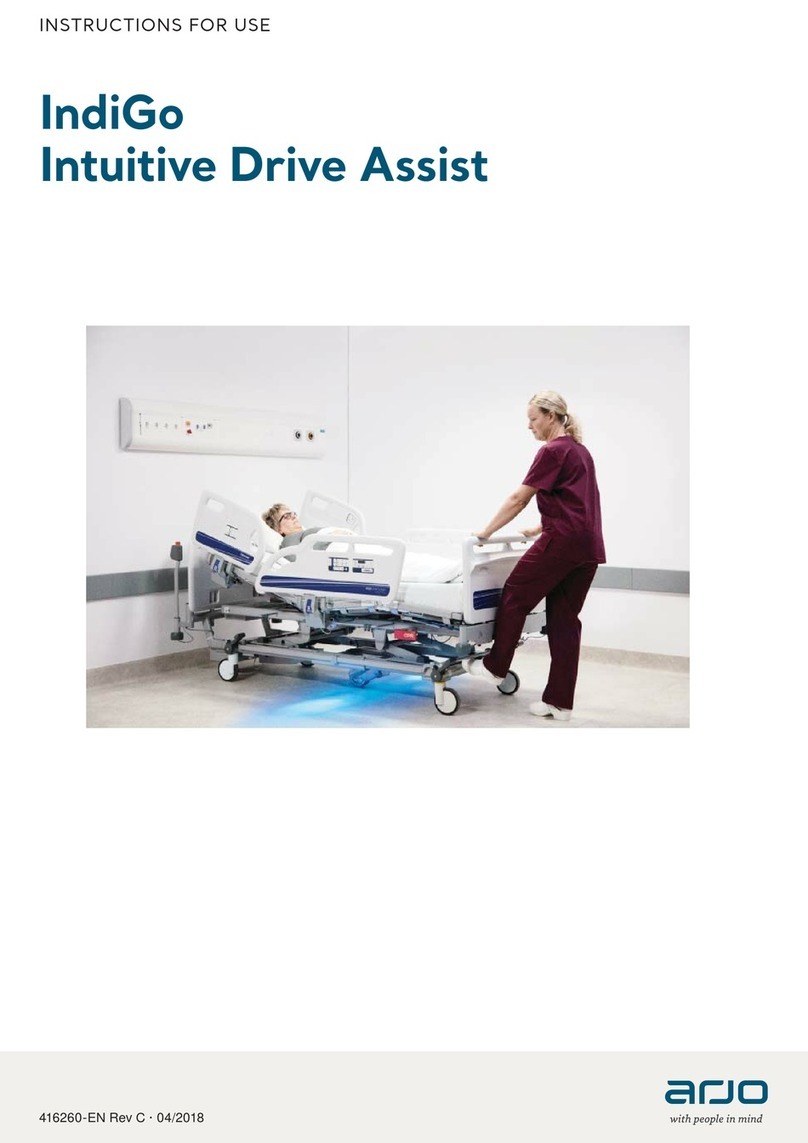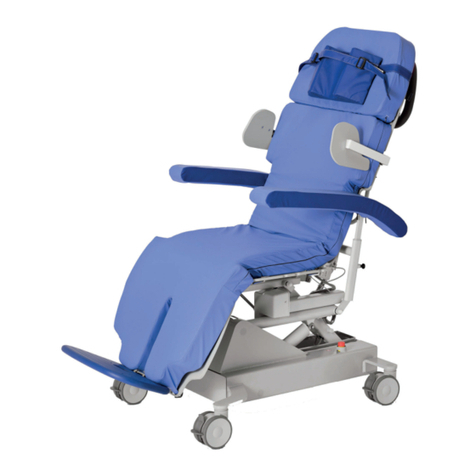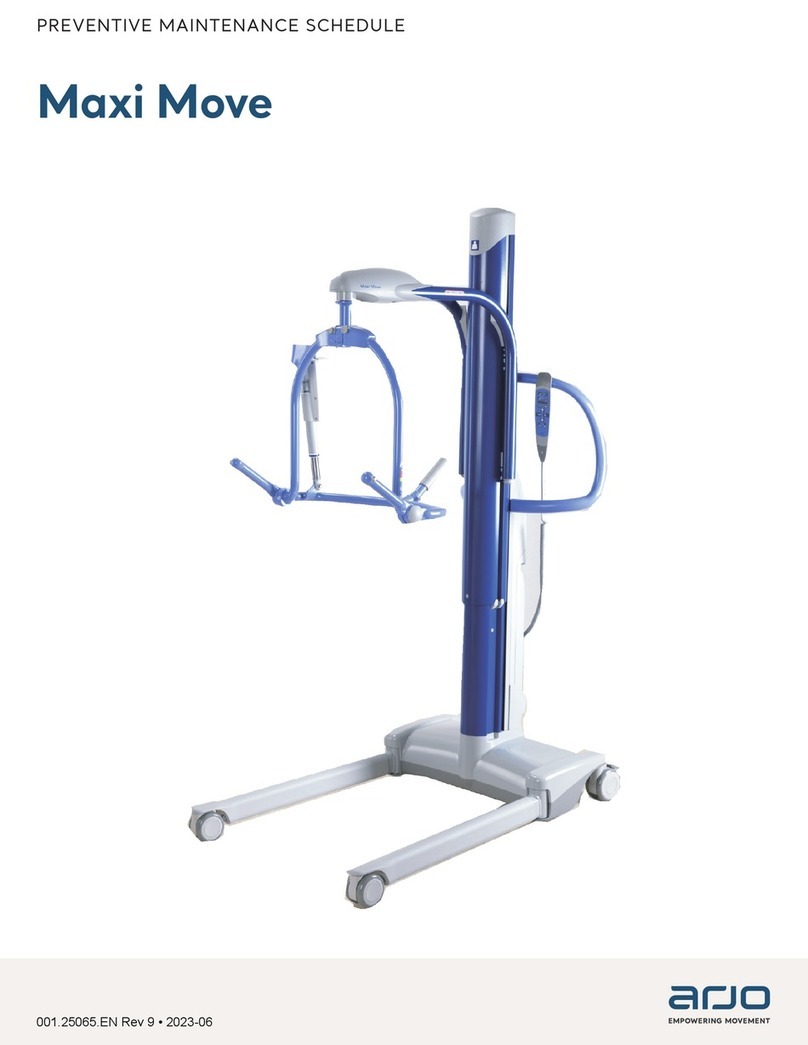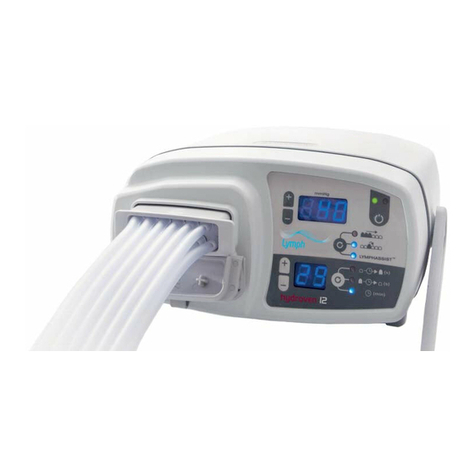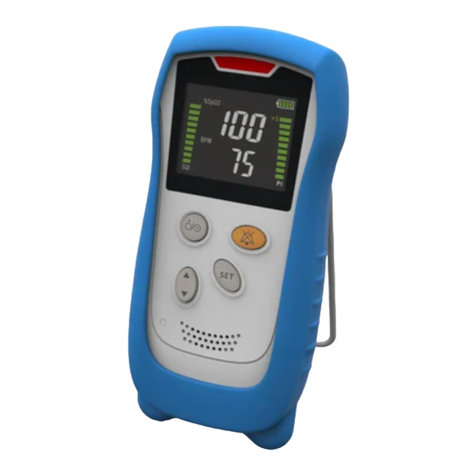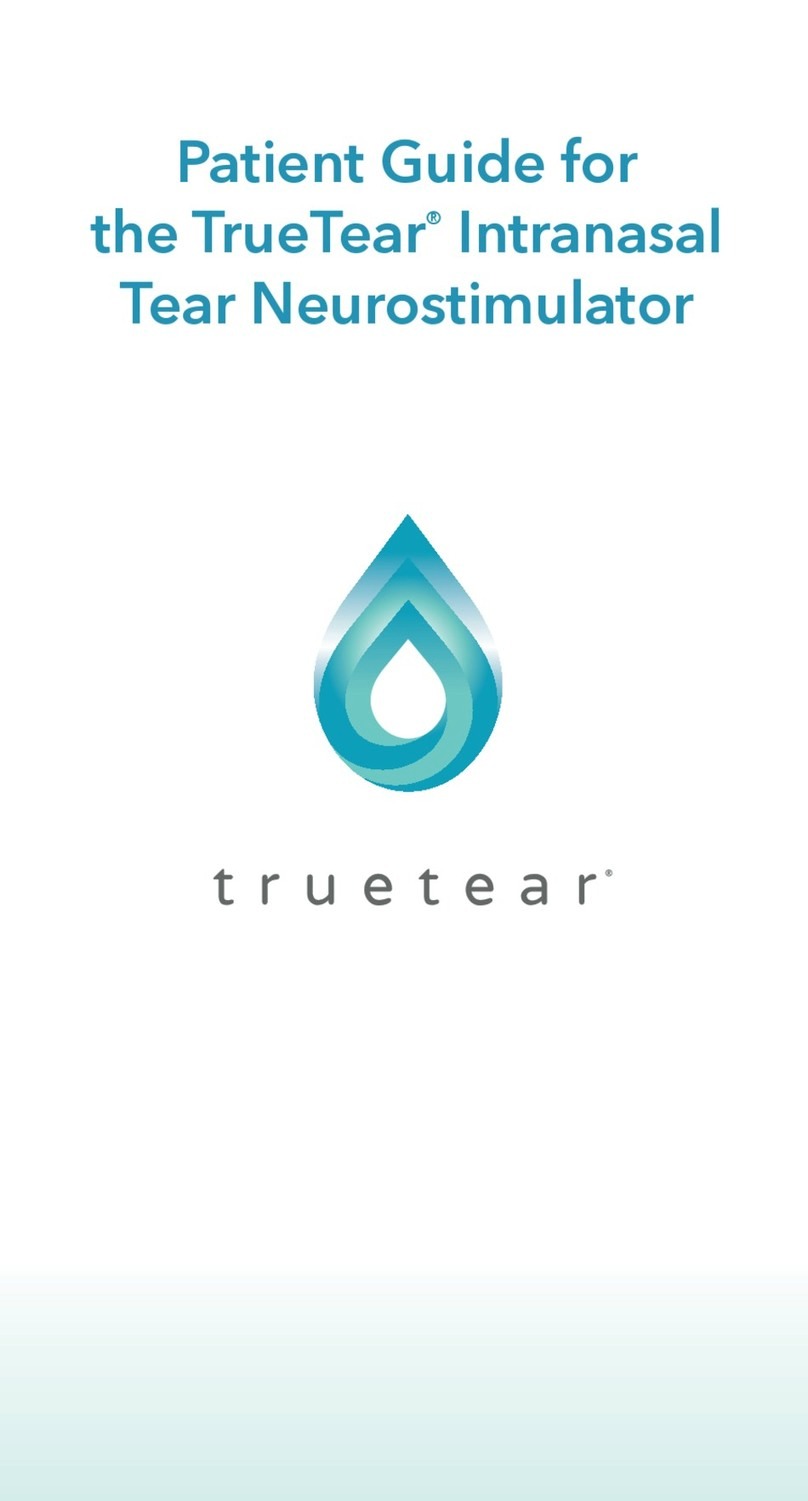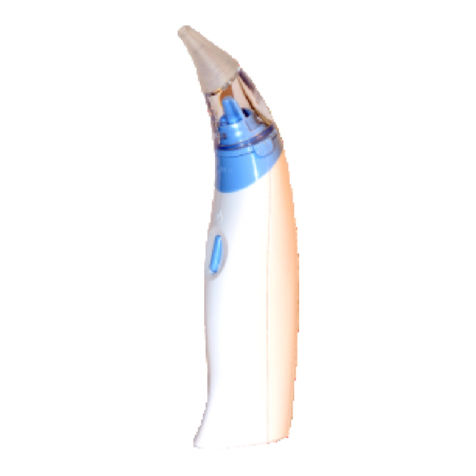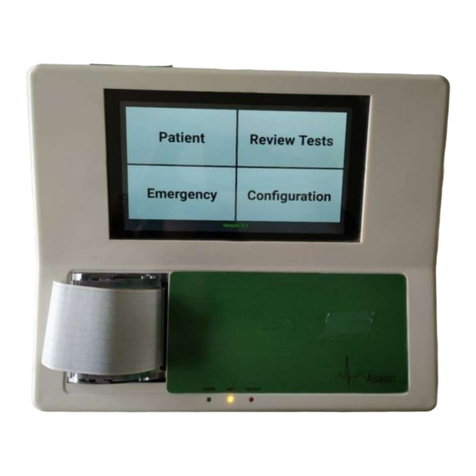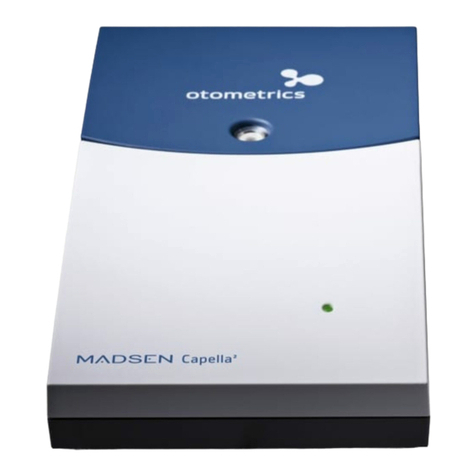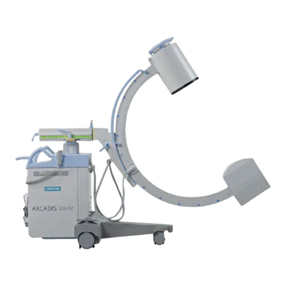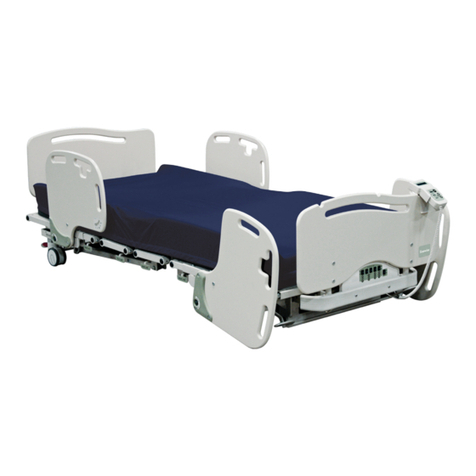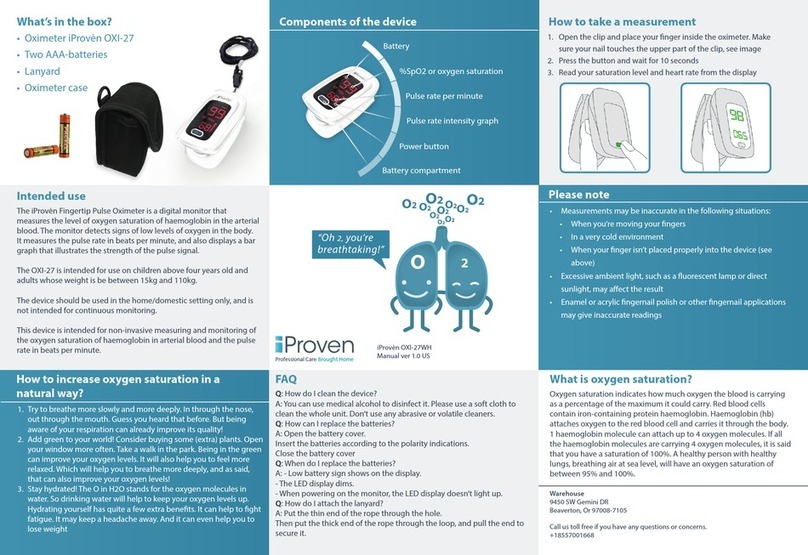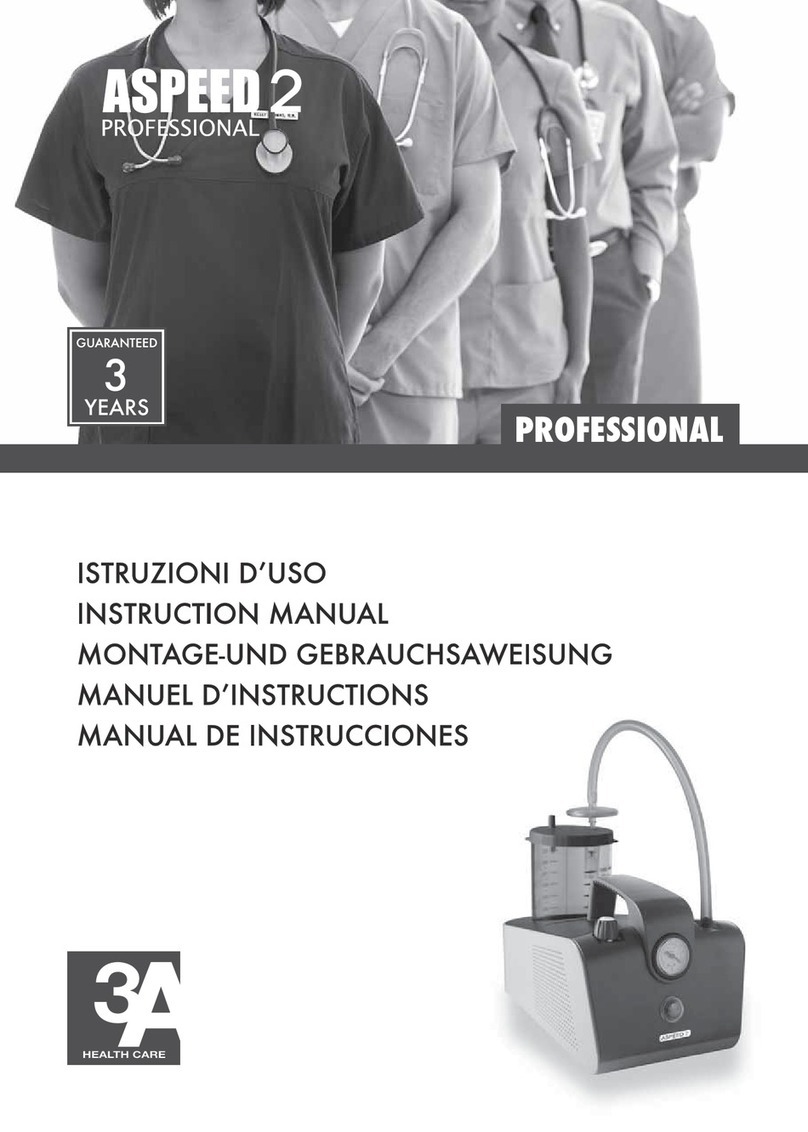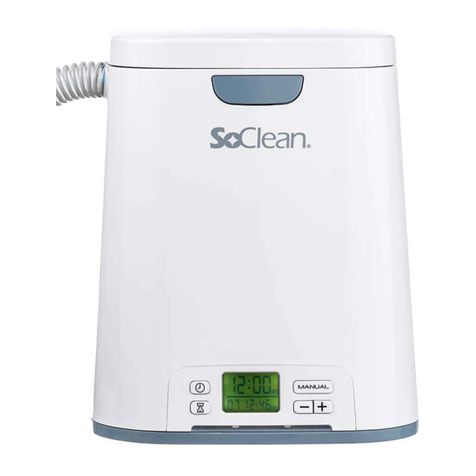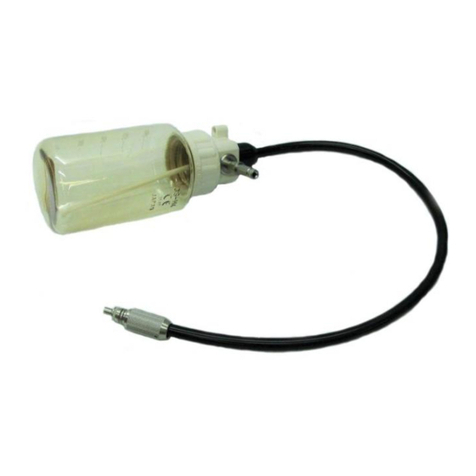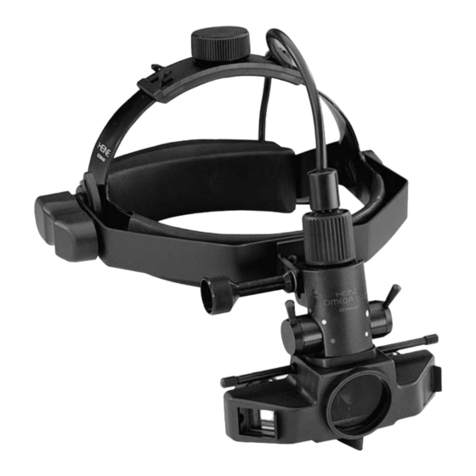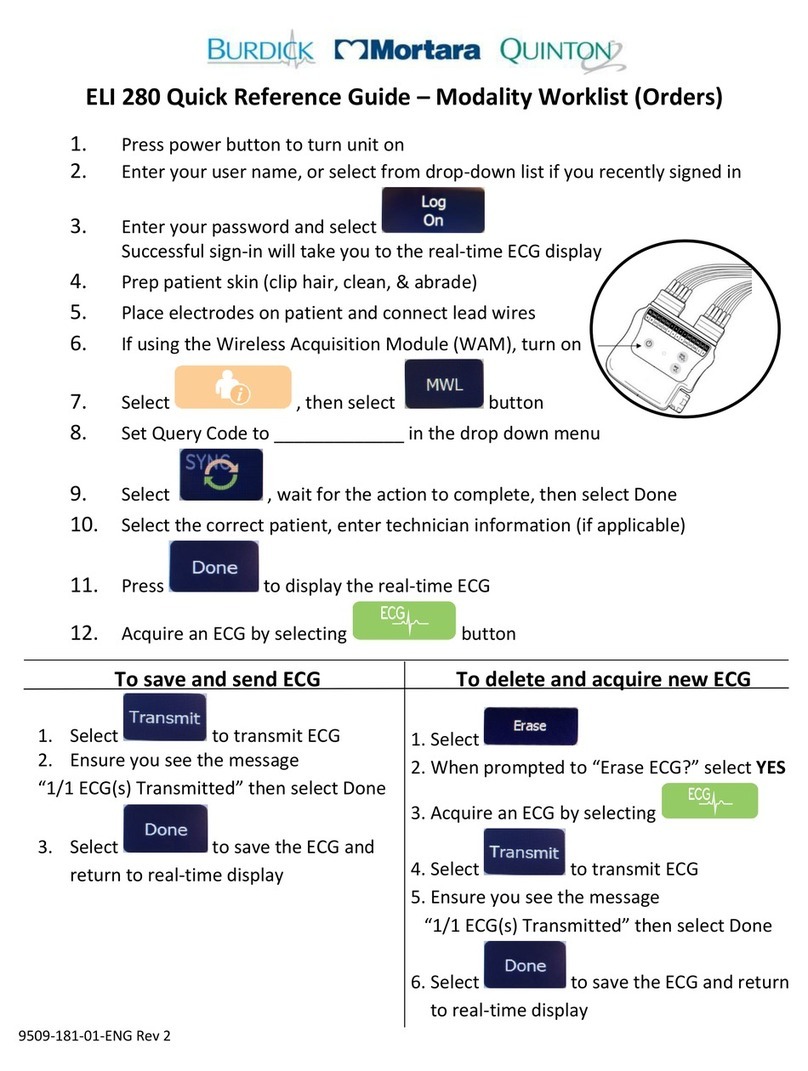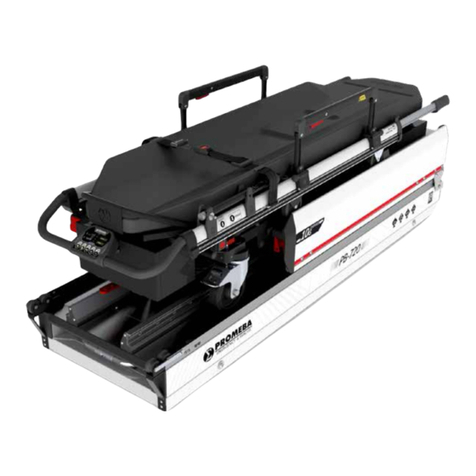Arjo Prioma Semi Electric Couch Series User manual

INSTRUCTIONS FOR USE
COU-SE-REV12-220820
Semi Electric
Prioma Couch Range

Page | 1
Commercial in confidence. Information for Use Manual Revision COU-SE-REV12-220820
CONTENTS
1.
WARNINGS & CAUTIONS
2 - 3
2.
INTRODUCTION
4
2.1
About This Manual
4
2.2
Features
4
2.3
Product Overview
5
3.
CLINICAL APPLICATION
6
3.1
Intended Use
6
4.
INSTALLATION
6
4.1
Electricity Supply
6
4.2
Placement of Footswitch
6
5.
OPERATION
7
5.1
Height Adjustment Foot Switch
7
5.2
Backrest Adjustment
8
5.3
Knee Positioning Adjustment
8
5.4
Castor - Fixed Positioning or Mobile Mode
9
5.5
Fixed Leg Adjustment
9
5.6
Fold-down Arms (if fitted)
10
5.7
Paper Roll Holder (if fitted)
11
6.
PRODUCT CARE
11
6.1
Cleaning
11
6.2
Disinfecting
11
6.3
Preventative Maintenance
12
6.4
Footswitch Checks
13
6.5
Trouble Shooting
14
7.
PRIOMA - SEMI ELECTRIC COUCH SPECIFICATIONS
15
8.
PRODUCT IDENTIFICATION LABEL
16
9.
PRODUCT LIFETIME & END OF LIFE DISPOSAL
17
9.1
Product Lifetime
17
9.2
End of Life Disposal
17
9.3
Safe Disposal of Gas Springs
17
10.
TRANSPORTATION & STORAGE
18
11.
WARRANTY & SERVICE
18
12.
REGULATORY INFORMATION
18

Page | 2
Commercial in confidence. Information for Use Manual Revision COU-SE-REV12-220820
1. WARNINGS & CAUTIONS
Important that this manual is read in its entirety prior to the operation of the couch. The
manual is designed to ensure that users are equipped with the information required to
competently and responsibly operate the couch and its accessories.
It is recommended that the instructions for use be kept in an easily assessable place for
quick reference. If required, Arjo product specialists can provide additional training.
All warnings and cautions within this manual should be strictly adhered to. Failure to do so
could result in harm to the patient, or operator.
Warnings highlighted throughout this manual identify possible hazards in procedures or
conditions, which if not followed correctly could result in serious injury or fatality.
Cautions highlighted throughout this manual identify possible hazards in procedures or
conditions, which if not followed correctly could result in equipment damage or failure.
GENERAL WARNINGS
•Electrical equipment can be hazardous if used incorrectly.
•Do not use electrically operated couches in the presence of flammable gases.
•Do not use electrically operated couches in operating theatres.
•Use the couch to support one patient only. The Prioma couch is intended for
one person use and may become unstable if used incorrectly.
•It is recommended that the couch be positioned at its lowest height when
unattended by caregivers to minimise the risk of patient injury from falls when
getting on and off the couch.
•Residual current devices (RCD) are not supplied with the Prioma couch.
Please consult with your Biomedical Engineer/advisor concerning RCD
requirements.
•The full safe working load (SWL) of the Prioma couch is 200Kg. This includes
the mass of the patient, and any accessories fitted to the couch.
•Do not place the power cord across the upholstered surface of the couch.
When the couch is not connected to mains power always store the mains
power cord safely.
•Do not use accessories that are not designed or approved for use with the
Prioma couch.
WARNING
Indicates possible hazard in procedures or conditions which, if not correctly
followed, could result in death, injury or other serious adverse reactions.
CAUTION
Indicates possible hazard in procedures or conditions which, if not correctly
followed, could result in equipment damage or failure.
Explains or amplifies a procedure or condition
Indicates an optional item or feature

Page | 3
Commercial in confidence. Information for Use Manual Revision COU-SE-REV12-220820
1. WARNINGS & CAUTIONS - Continued
GENERAL SAFETY WARNINGS
•This product is not designed to be used with a mattress.
•Before operating the couch make sure that the patient is safely positioned to
avoid entrapment.
•Before transporting the couch make sure the power cable is disconnected from
mains power and stored safely. Adjust the couch to a suitable height to move
without stooping, or straining.
•Always retract “castor use mode” when the couch is stationary.
•When the patient's condition could lead to patient entrapment the upholstered
platform should be left in the flat position whilst unattended.
•The clinically qualified person responsible should consider the age, size and
condition of the patient before using the couch and its accessories.
•Always ensure that all hospital lines and power cables are free from possible
entanglement with mechanical parts of the couch.
•Always ensure that attendant and patient limbs are free from potential
entrapment areas before operating any functions.
•It is recommended that the product installation process is carried out by two
people.
•It is recommended to place the couch on a clean, flat floor or platform.
WARNING
•Ensure that the patient, caregivers and other equipment and furniture are not
positioned to become either trapped or crushed during couch adjustment.
•Ensure that the power lead is not being stretched.
•Ensure that the power cable cannot become entangled with moving parts of
the couch.
•DISCONNECT the electrical power cable from the mains and store before
transporting the couch.
•If the power cable shows any sign of damage, replace immediately.
•Some functions may cause injury to the patient if unintentional movement
occurs.
CAUTION
Do not operate the controls for more than the control systems prescribed duty
cycle (no more than 2 minutes within an 18 minute period of time).

Page | 4
Commercial in confidence. Information for Use Manual Revision COU-SE-REV12-220820
2. INTRODUCTION
2.1 About This Manual
The INSTRUCTIONS FOR USE contains information for the installation, use and
maintenance of the Prioma Semi Electric Couch range. Be sure to read this manual
completely before assembly and operation. Not following the precautions in the instruction
manual, could result in harm to patients or operators.
The Prioma couches include a range of functions and positional movements that assist
caregivers and provide for patient comfort. Ease of use, functionality, serviceability and
cleaning practicality are key features of the Prioma couches. The couches have a
fabricated steel structure with a powder coated finish. The plastic components are made
from PP and ABS plastic.
2.2 Features
Standard
•Electrically adjustable height
•75mm diameter retractable wheels for uncompromised stability
•Levelling foot for uneven floors
•Manually operated gas assisted backrest positioning (2 & 3 section models only)
•Manually operated gas assisted footrest positioning (3 section models only)
•M1 flame retardant vinyl upholstery
Optional
❖Full ABS plastic undercarriage moulded cover
❖Breath hole to backrest (2 & 3 section models only)
❖Fold-down Arms/Side Supports
❖Paper Roll Holder
Optional features are specified by the customer at the time of ordering. The chosen
options are indicated by the equipment model number.
The model number and serial numbers can be found on the specification
label; this is located on the side of the deck frame beneath the upholstered top.
CAUTION
Before using the couch, ensure that the “Power in” rating on the specification label is
compatible with the local electricity supply.

Page | 5
Commercial in confidence. Information for Use Manual Revision COU-SE-REV12-220820
2. INTRODUCTION - Continued
2.3 Product Overview
A. Backrest Breath Hole (if fitted)
B. Upholstered Backrest
C. Upholstered Seat
D. Upholstered Footrest
E. Adjustable Leg
F. Wheels x 4
G. Fixed Leg x 3
H. Retracting wheels activation pedal
I. Knee position Adjustment Lever
J. Undercarriage Cover
K. Fold-down Arms
L. Backrest Adjustment Lever
M. Paper Roll Holder

Page | 6
Commercial in confidence. Information for Use Manual Revision COU-SE-REV12-220820
3. CLINICAL APPLICATION
3.1 Intended Area of Use
Prioma couches are appropriate for use in private practices, nursing homes, physio
centres, hospitals and clinics for the purpose of a wide range of examination and treatment
procedures, diagnosis and patient care.
4. INSTALLATION
The following chapter describes how to install the couch.
WARNING
If the power supply cord or plug is damaged, the complete assembly must be
replaced by authorised service personnel. Do not remove the fitted plug or use a
rewireable plug or adapter. Make sure the power supply cord is not stretched, kinked
or crushed. Do not allow the power supply cord to trail on the floor where it may
cause a trip hazard. Make sure the power supply cord does not become entangled
with moving parts of the couch. Disconnect the power supply cord from the electricity
supply, and store safely, before moving the couch.
4.1 Electricity Supply
Connect the mains cable plug to a suitable socket outlet. Make sure the plug is easily
accessible so it can be disconnected quickly in an emergency.
The power supply cable should be stored safely when the couch is not in use or before
moving the couch. To isolate the couch from the electricity supply, disconnect the mains
plug from the socket outlet.
4.2 Placement of the Foot Switch.
The foot switch should be placed on the ground, positioned in the middle between the
couch legs for the operator’s convenience.

Page | 7
Commercial in confidence. Information for Use Manual Revision COU-SE-REV12-220820
5. OPERATION
5.1 Height Adjustment Footswitch
WARNING
It is recommended that the couch be positioned at its lowest height when unattended
by caregivers to minimise the risk of patient injury from falls.
Ensure that there is adequate clearance between the outer extremities of the couch
and other building fixtures and equipment when operating couch functions.
The height adjustment of the couch is driven by an electric motor that is activated by a foot
operated controller. Height adjustment occurs only while the footswitch button is pressed.
Adjustment will stop when the button is released, or the movement selection reaches the
end of its range of adjustment.
WARNING
If the footswitch is accidentally run over or sustains damage or suspected damage in
any way, immediately stop using the footswitch and perform full checks as detailed in
the Maintenance Section of these instructions.

Page | 8
Commercial in confidence. Information for Use Manual Revision COU-SE-REV12-220820
5. OPERATION - Continued
5.2 Backrest Adjustment (2 & 3 Section Models Only)
The backrest is adjusted by operating the gas spring release handle on either side of the
backrest.
To Operate: Place the palm of your hand on the backrest (A) and grip the lever (B) with
your fingers. Squeeze the handle to release the gas spring locking mechanism allowing
the backrest to be raised or lowered.
Release the handle when the desired position is reached to lock in position.
5.3 Knee Positioning Adjustment (3 Section Model Only)
The Knee/Leg position is adjusted by operating the gas spring release handle on either
side of the footrest panel.
To operate; pull up lever (B) whilst simultaneously pushing down the leg rest frame (A)
with the other hand. This releases the gas spring braking mechanism allowing the footrest
panel to be raised or lowered.
Release handle (B) when the desired position is reached to lock in position

Page | 9
Commercial in confidence. Information for Use Manual Revision COU-SE-REV12-220820
5. OPERATION - Continued
5.4 Castor - Fixed Position or Mobile Mode
Activation of the castors bringing them in contact with the floor and enabling mobility of the
couch is achieved by means of foot operated rotary pedals.
WARNING
Operate Fixed and Mobile rotary pedals with your feet while wearing suitable shoes.
Do not operate the pedals with your hands.
Fixed Position: When the front and rear pedal levers are angled above the horizontal
position the four castors are withdrawn and no longer function. The couch now stands on
the four corner legs, in a fixed mode and cannot be moved.
Mobile Position: When the front and rear pedal levers are angled below the horizontal
position, the four castors are lowered raising the supporting legs off the ground. The couch
is now mobile.
CAUTION
•Disconnect the bed power cable from the source before moving the couch.
•Do not remove the power cable from the source by pulling on the cord.
•Do not pull on the power cable or foot switch cable to manoeuvre the couch.
•Always disengage the castors to a “Fixed Mode” when couch is stationary.
5.5 Fixed Leg Adjustment
In the case of an uneven floor causing the couch to
be unstable, the Prioma couch includes one fixed leg
with an adjustable stop that enables adjustment to
compensate for the uneven floor.
To Adjust (increase) Foot Height: Turn the
adjustable stop (A) in an anti-clockwise direction to
extend the foot until couch stability is achieved.
To Adjust (decrease) Foot Height: Turn the
adjustable stop (A) in a clockwise direction until
couch stability is achieved.

Page | 10
Commercial in confidence. Information for Use Manual Revision COU-SE-REV12-220820
5. OPERATION - Continued
5.6 Fold-down Arms (if fitted)
The optional Fold-down Arms (if fitted) can be easily lowered when not required.
Note: The fold down arms for the Prioma 2 & 3 section couch are shorter in length than
the Prioma 1 section couch. The functional requirements for both models are the same.
Prioma 2 & 3 Section Arm Length
530mm O/A
(Fig 1, 2 & 3)
Prioma 1 Section Arm Length
1000mm O/A
(Fig 4)
To Lower: Grip and hold the Arm in the middle of the top rail (A) and pull up as indicated
by the directional arrow (fig 1.) to unlock.
Controlling the Arm allow it to pivot away from the couch (fig 2.) and swing down in a
controlled manner (fig 3.)
To Raise: Pull the Arm away from the couch and allow it to pivot to an upright position.
Once in an upright position, allow the Arm to slide down and lock in to position.
WARNING
Do not operate the Arms when there is potential of entrapment or crushing to the
patient, caregivers, visitors and/or other equipment. Do not use other brand Arms on
the Prioma couch.

Page | 11
Commercial in confidence. Information for Use Manual Revision COU-SE-REV12-220820
5. OPERATION - Continued
5.7 Paper Roll Holder (if fitted)
The Prioma couch can be equipped with a paper roll holder which (if fitted) is located at the
head end of the couch.
To Install or Change the Paper Roll:
1. Remove M6 hexagon nut (A), at one end of the centre rod using 10mm ring spanner.
2. Partly slide out centre rod, just enough to remove empty paper roll.
3. Insert new paper roll over centre rod.
4. Re-insert the rod though bracket hole and secure in position by fitting M6 hexagon nut.
5. Paper roll is now ready for use.
6. PRODUCT CARE
WARNING
Before cleaning always disconnect the couch from the mains power source.
It is strongly recommended that protective clothing be used when carrying out
any cleaning processes on the Prioma Couch.
The following procedure also applies to the accessories.
6.1 Cleaning
Clean all surfaces with a disposable cloth soaked in a neutral detergent and hand hot
water. Start by cleaning the upper sections of the couch working along all horizontal
surfaces. Work methodically towards the lower sections of the couch and clean the castors
last. Take extra care to clean areas that may trap dust or dirt. Wipe over with a new
disposable cloth moistened with clean water and dry with disposable paper towels.
6.2 Disinfecting
After cleaning the couch as described above, wipe all surfaces with sodium
dichloroisocyanurate (NaDCC) at a concentration of 1,000 parts per million (0.1%) of
available chlorine. In the case of pooling body fluids, e.g. blood, the concentration of
NaDCC should be increased to 10,000 parts per million (1%) of available chlorine.
CAUTION
Do not use abrasive compounds or pads or phenol-based disinfectant solutions.
Do not use jet stream cleaning or wash tunnels.

Page | 12
Commercial in confidence. Information for Use Manual Revision COU-SE-REV12-220820
6. PRODUCT CARE - Continued
6.3 Preventative Maintenance
The following preventative maintenance procedures should be carried out every 12
months.
Other than general maintenance activities all other service or repair work must
be performed by qualified and trained persons who are approved by Arjo.
WARNING
The couch must be disconnected from the mains power supply before starting any
maintenance activity. Avoid skin contact with lubricants.
GENERAL
1
Examine the couch for obvious signs of damage. All aspects of the equipment
should operate as intended. Check that all nuts, bolts and other fasteners are
tight and are not missing.
2
Examine flexible cables and conduits for cuts, cracks, abrasions or other
deterioration.
3
Check that the power supply plug is not damaged. If either the power cable or
plug is damaged, then both the cable and plug must be replaced as a complete
assembly by an approved service agent.
CASTORS –FIXED & MOBILE MODE
1
Step and push down on the lever pedals. Push the couch forward checking that
each castor rolls and swivels freely.
2
Check tyres for wear and remove any threads, fluff and dirt from the wheel axle.
3
With lever pedal in the Fixed Mode position, check that all four castors are
suspended off the ground and check for excessive wear on the four rubber legs.
4
If fixed and mobile mode is not working correctly, contact an approved service
agent.
FOLD-DOWN ARMS
1
Inspect the Arms for general wear and tear on fittings and pivot joints every six
months. Check for rust, structural integrity of welds and paint finish every twelve
months.
2
Raise the Arm and lock in position. Refer to the operating procedures in this
manual for further instruction. Ensure that locking operation operates smoothly
and check for wear and tear of pivot screw and arm posts.
PAPER ROLL HOLDER
1
Check that the paper roll holder is securely attached to the couch and centre rod
has not been compromised in any way.

Page | 13
Commercial in confidence. Information for Use Manual Revision COU-SE-REV12-220820
6. PRODUCT CARE - Continued
6.4 Footswitch Checks
Between each patient, Arjo strongly advises that preventative maintenance checks are
conducted on the Footswitch. When using the footswitch staff should be aware of, and
check for any of the symptoms listed in point 3 below.
Preventative Maintenance Checks
Arjo recommends that the full check and testing regime is conducted between each
couch use, or worst case during annual preventative maintenance. This should take no
more than one (1) minute to complete.
1
Visual Inspection of the Footswitch Control and Casing
1.1 Inspect the outer plastic casing for any obvious cracks or damage.
1.2 Inspect for damage to the top cover, particularly over the buttons.
If any damage is identified while conducting checks 1.1 and 1.2, immediately
decommission the couch and report the damage to maintenance staff.
2
Visual inspection of the Cable and Cable Insulation
2.1 Inspect the cable for any nicks or cuts in the insulation
2.2 Inspect for any evidence that the cable may have been squashed/flattened.
Squashed or flattened cables may indicate a possible break in the internal
conductors or insulation causing conductors to short together, which could cause
unwanted movement of the couch. Any footswitch that is found with obvious
damage to the cable insulation, immediately decommission the couch and report
the damage to maintenance staff.
3
Tactile Inspection of the Buttons
All buttons should be operated, and response tested.
Depress each button on the footswitch. Each button should have a positive click
that is also felt. The function being pressed should also operate. If the button:
•does not have a click feel
•does not immediately operate the function
•feels soft offering no resistance
•feels different to what it normally does
•travels further when depressed
Immediately report the damage to maintenance staff or quarantine the couch and
contact an Arjo approved Technician.

Page | 14
Commercial in confidence. Information for Use Manual Revision COU-SE-REV12-220820
6. PRODUCT CARE - Continued
6.5 Troubleshooting
Symptom
Possible Cause
Action
Lift actuator fails to work
Power disconnected.
Ensure mains supply lead is
connected
Control box and Footswitch
plugs disconnected
Check the plugs are fully
inserted in the control box.
Blown fuse
Contact your local Arjo
Service Department.
Damaged footswitch cable
Replace footswitch
Control box overheated
due to excessive use
exceeding duty cycle.
Allow control box to cool
down.
Fixed mode not effective
Damaged lever pedal
mechanism
Call approved technician
Backrest or Footrest
release not effective
Release mechanism not
correctly adjusted
Call approved technician

Page | 15
Commercial in confidence. Information for Use Manual Revision COU-SE-REV12-220820
7. PRIOMA - SEMI ELECTRIC COUCH SPECIFICATIONS
Dimensions
Couch Model
HC1
HC2
HC3
Number of Sections
1 section
2 section
3 section
Length (mm) (+/-10mm)
1945
1945
1945
Width (mm) (+/-10mm)
700
700
700
Width with Fold-down Arms (+/-10mm)
755
755
755
Deck Height Range (mm) (+/-10mm)
460 to 935
460 to 935
460 to 935
Backrest Angle Adjustment (+/-5°)
N/A
75°
75°
Knee Positioning Angle (+/-5°)
N/A
N/A
-30°
Safe Working Load & Product Weight (approximate)
Couch (without accessories)
76 Kg
84 Kg
89 Kg
With Fold-down Arms Fitted
+12.0 Kg
+8.0 Kg
+8.0 Kg
With Fold-down Arms & Paper Roll
Holder fitted (excluding paper roll)
+13.5 Kg
+9.5 Kg
+9.5 Kg
Safe Working Load SWL
200 Kg
200 Kg
200 Kg
Electrical Data
Power In
100 - 240V AC 50/60Hz, Max current 2.5A
Duty Rating
Intermittent 10%, Max 2 min / 18 min
Electric Shock Protection
Class 2 Type B
Liquid Ingress Protection
IPX6 Waterproof
Standards
This product has been designed and manufactured to comply with International
Standard IEC 60601-2-52 were applicable.
WARNING
The clinically trained person should consider the patients weight, size and mobility to
establish the safe use of the Prioma couch.

Page | 16
Commercial in confidence. Information for Use Manual Revision COU-SE-REV12-220820
8. PRODUCT IDENTIFICATION LABEL
Description
Symbol / Label
Prioma Couch Product
Identification Label
Safe Working Load
Refer to Instructions for Use
Date of Manufacture
Product Reference Number
11 Digit Code Representing
Various Options & Build Types
Product Serial Number
Manufacturer
Indicates the Product is a
Medical Device –According to EU
Medical Device Regulation
2017/745
Manufacturers European
Representative
Complies with European Medical
Device Directive

Page | 17
Commercial in confidence. Information for Use Manual Revision COU-SE-REV12-220820
9. PRODUCT LIFETIME & END OF LIFE DISPOSAL
9.1 Product Lifetime
The lifetime of this equipment is typically (10) years. “Lifetime” is defined as the period
during which the product will maintain the specified performance and safety, provided it
has been maintained and operated in conditions of normal use in accordance with the
requirements provided in this instruction for use manual
9.2 End of Life Disposal
•Equipment that has electrical and electronic components should be disassembled and
recycled per Waste of Electrical and Electronic Equipment (WEEE) or in accordance
with local or national regulation.
•Components that are primarily made up of different kinds of metal (containing more
than 90% metal by weight) for example bed frame, should be recycled as metals.
9.3 Safe Disposal of Gas Springs
Gas springs contain air and oil at high pressure and must be vented in accordance with the
following instructions before being discarded.
Under no circumstances should any attempt be made to open the device.
WARNING
DANGER OF EXPLOSION. DO NOT HEAT OR INCINERATE
High pressure gas. The sudden release of gas at high pressure could cause serious
injury or death. Use suitable protective clothing, eye protection or a face shield. This
procedure should be carried out in a well-ventilated room as the expelled gas may
contain oil droplets.
1 Operate the valve at the end of the piston rod and allow the piston rod to fully
extend.
2 Clamp the gas spring in a vice and drill a 3mm diameter hole, 15 to 20mm from the
end of the gas spring housing (refer diagram below). Screen off the drilling point as
metal chips and oil may be ejected due to the high internal pressure. Then drill a
second hole at position 2 as shown. The holes should be drilled to a depth of
approximately 10mm.
Figure 22: Disposal of Gas Spring
3 Pump the piston rod in and out several times while holding the drilled hole over a
container to collect the expelled oil.
4 Dispose of the gas spring and oil through special waste or recycling points in
accordance with local regulations. Do not dispose of gas springs or oil in household
refuse.
5 If correct disposal in accordance with these instructions is not possible, the unit
should be returned to the supplier.

Page | 18
Commercial in confidence. Information for Use Manual Revision COU-SE-REV12-220820
10. TRANSPORTATION & STORAGE
Handle with care: Prioma couches should be stored in a clean, dry, well ventilated area.
DO NOT DROP and avoid shock or violent impact when transporting.
The following limits apply during transport and or a storage period of up to 6 weeks
duration:
Ambient temperature
-15°C
To
+60°C
Relative humidity
10%
To
75%
Air pressure
50 kPa
To
106 kPa
The following limits apply to normal operating conditions and or periods of storage
longer than 6 weeks:
Ambient temperature
+10°C
To
+40°C
Relative humidity
30%
To
75%
Air pressure
70 kPa
To
106 kPa
11. WARRANTY AND SERVICE
Arjo’s standard terms and conditions apply to all sales. A copy is available on request.
These contain full details of warranty terms and do not limit the statutory rights of the
consumer.
For service, maintenance and any questions regarding this product, please contact your
local Arjo office or approved distributor. Arjo offices can be found at:
www.arjo.com/int/region-select/
Have the model number and serial number of the equipment to hand when contacting Arjo
regarding service, spare parts or accessories.
12. REGULATORY INFORMATION
Caretek (China) Medical PLC
Xiguakeng, Guanqiao Village, Shilou Town, Panyu District, Guangzhou City,
Guangdong Province, P.R. China 511447
TEL: +8620-84846868
Shanghai International Holding Corp. GmbH (Europe)
Eiffestrasse 80. D-20537 Hamburg, Germany

Page | 19
Commercial in confidence. Information for Use Manual Revision COU-SE-REV12-220820
At Arjo, we are committed to improving the everyday lives of people affected by reduced mobility and age-related health challenges.
With products and solutions that ensure ergonomic patient handling, personal hygiene, disinfection, diagnostics, and the effective
prevention of pressure ulcers and venous thromboembolism, we help professionals across care environments to continually raise
the standard of safe and dignified care. Everything we do, we do with people in mind.
Caretek (China) Medical PLC
Xiguakeng, Guanqiao Village, Shilou Town, Panyu District, Guangzhou City,
Guangdong Province, P.R. China 511447
TEL: +8620-84846868
This manual suits for next models
3
Table of contents
Other Arjo Medical Equipment manuals
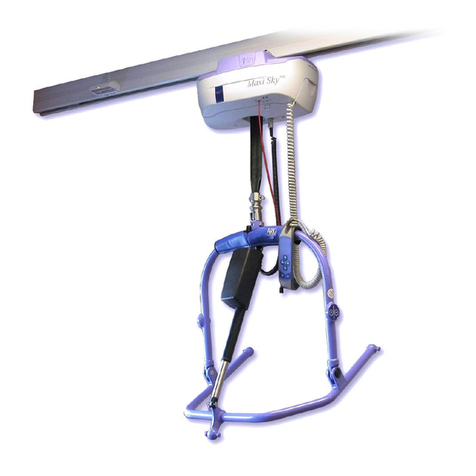
Arjo
Arjo Maxi Sky 600 ECS User manual
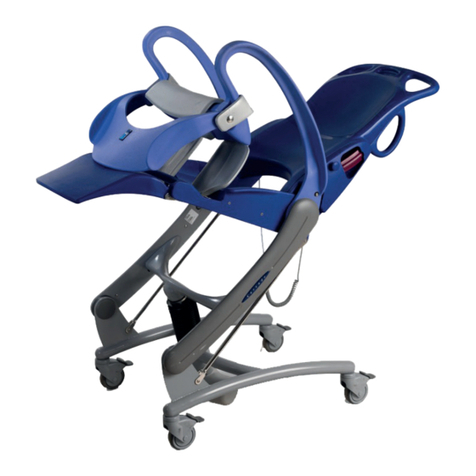
Arjo
Arjo CARENDO User manual
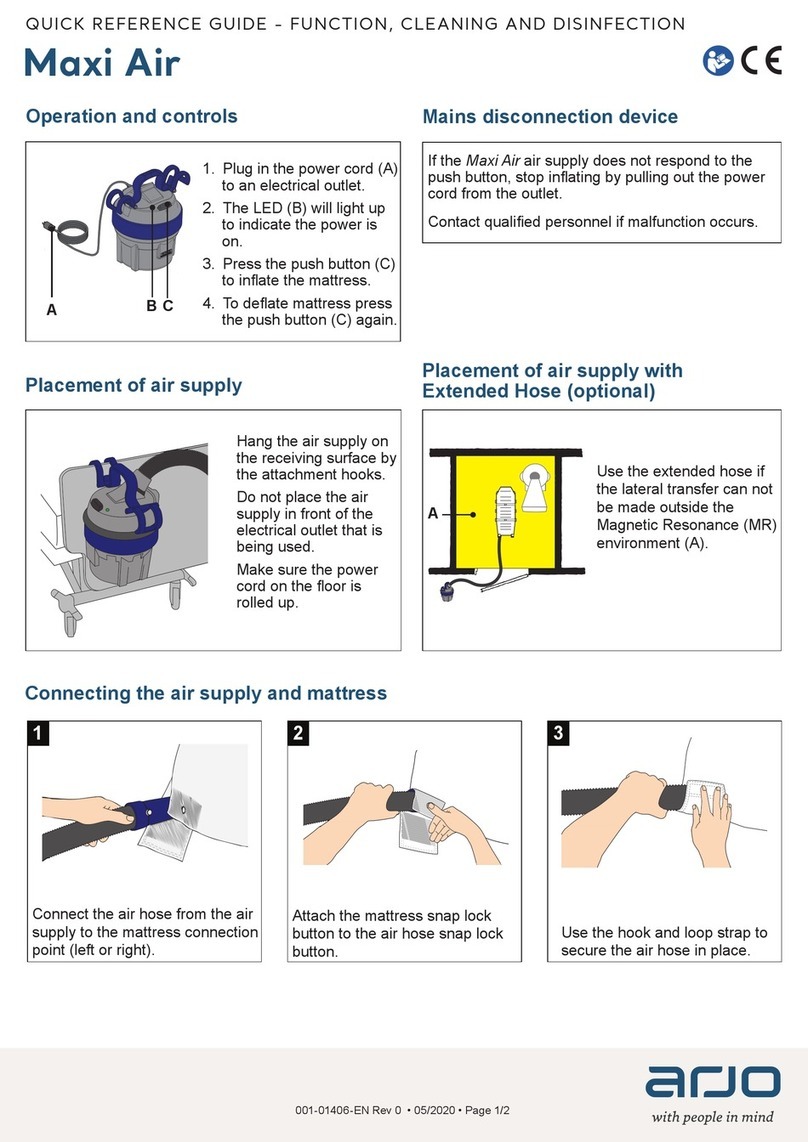
Arjo
Arjo Maxi Air User manual

Arjo
Arjo Sara Combilizer User manual
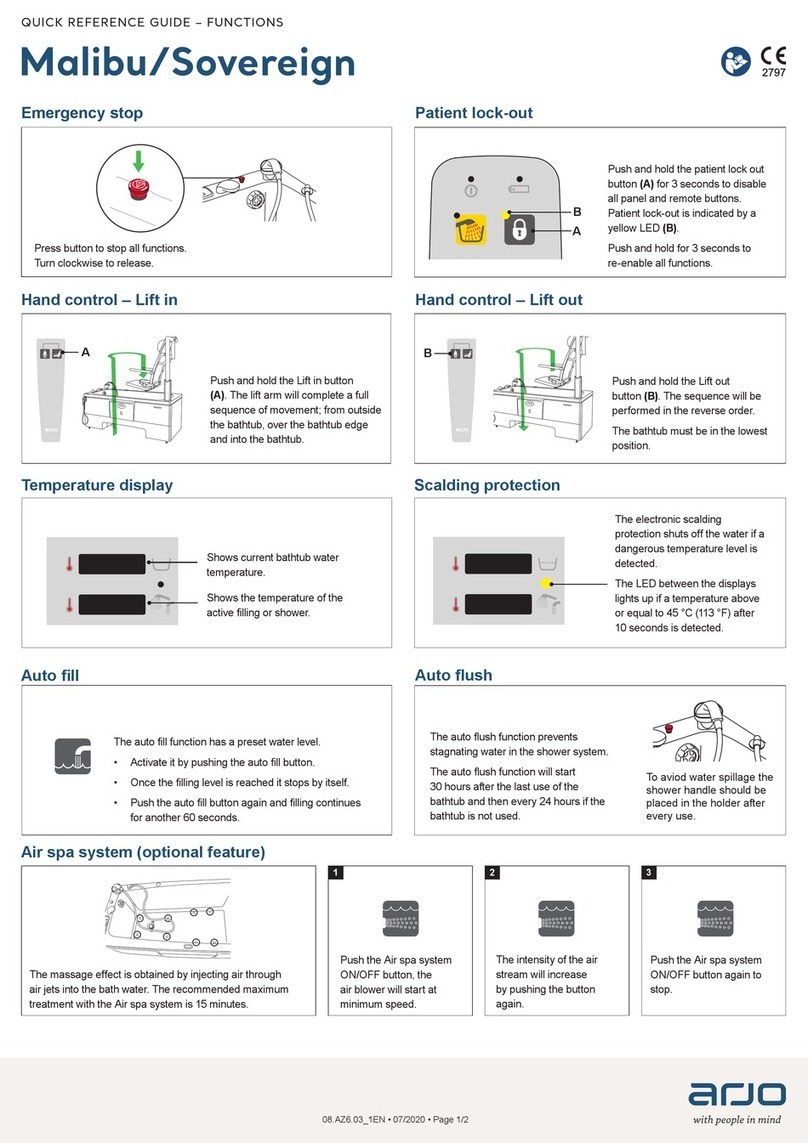
Arjo
Arjo Malibu User manual
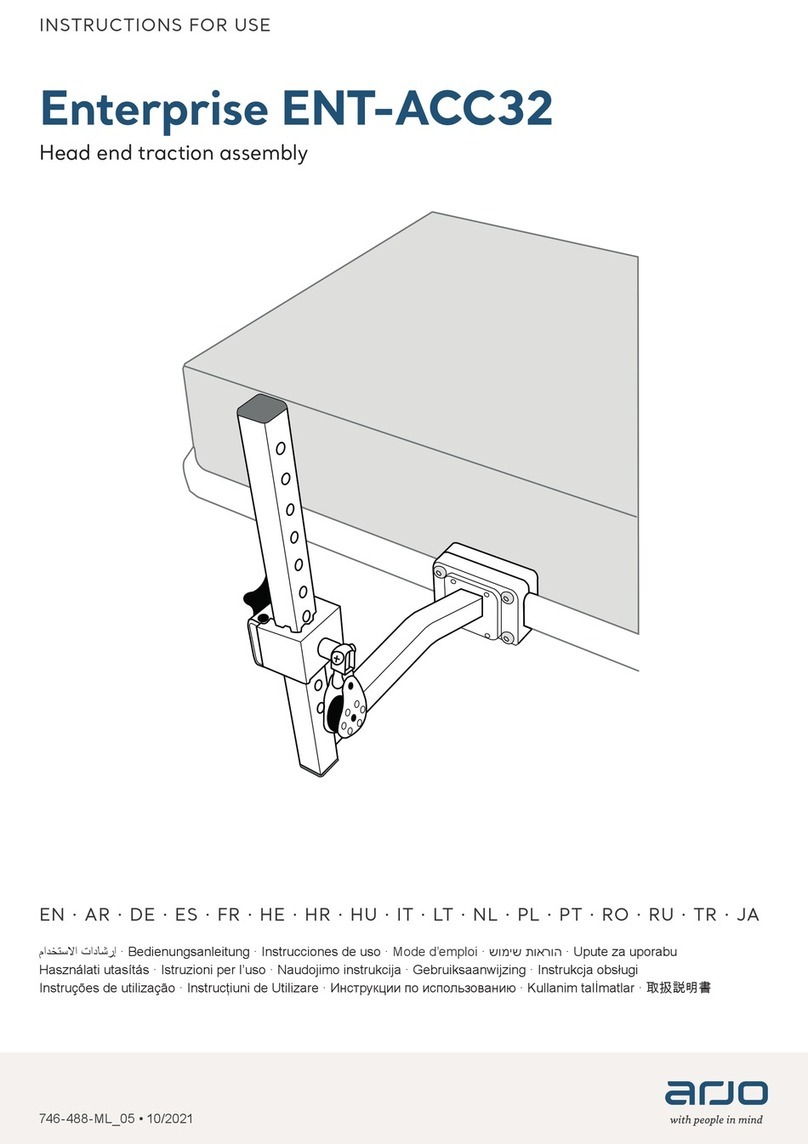
Arjo
Arjo Enterprise ENT-ACC32 User manual
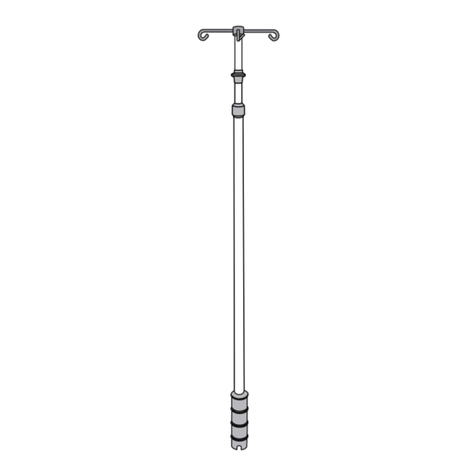
Arjo
Arjo Enterprise ENT-ACC24 User manual

Arjo
Arjo CARENDO Operating instructions
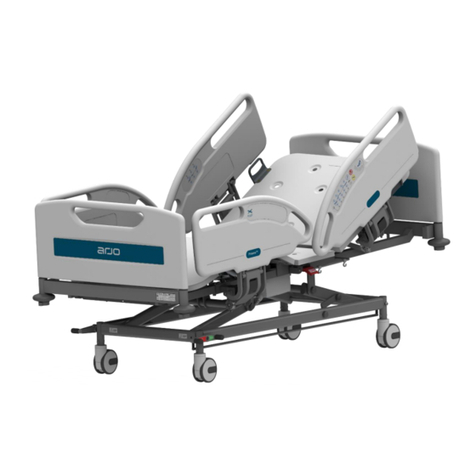
Arjo
Arjo Prioma Series User manual
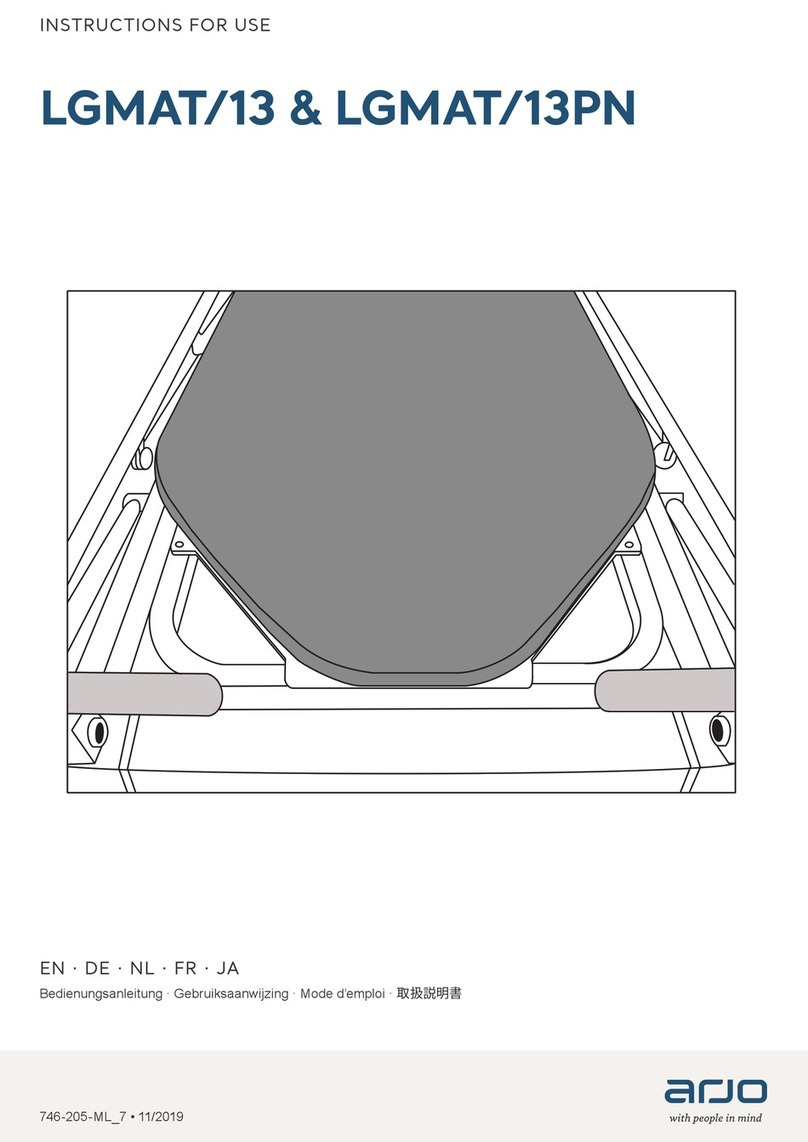
Arjo
Arjo LGMAT/13 User manual
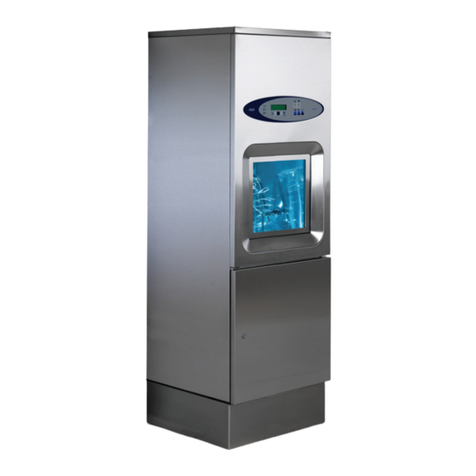
Arjo
Arjo Typhoon User manual
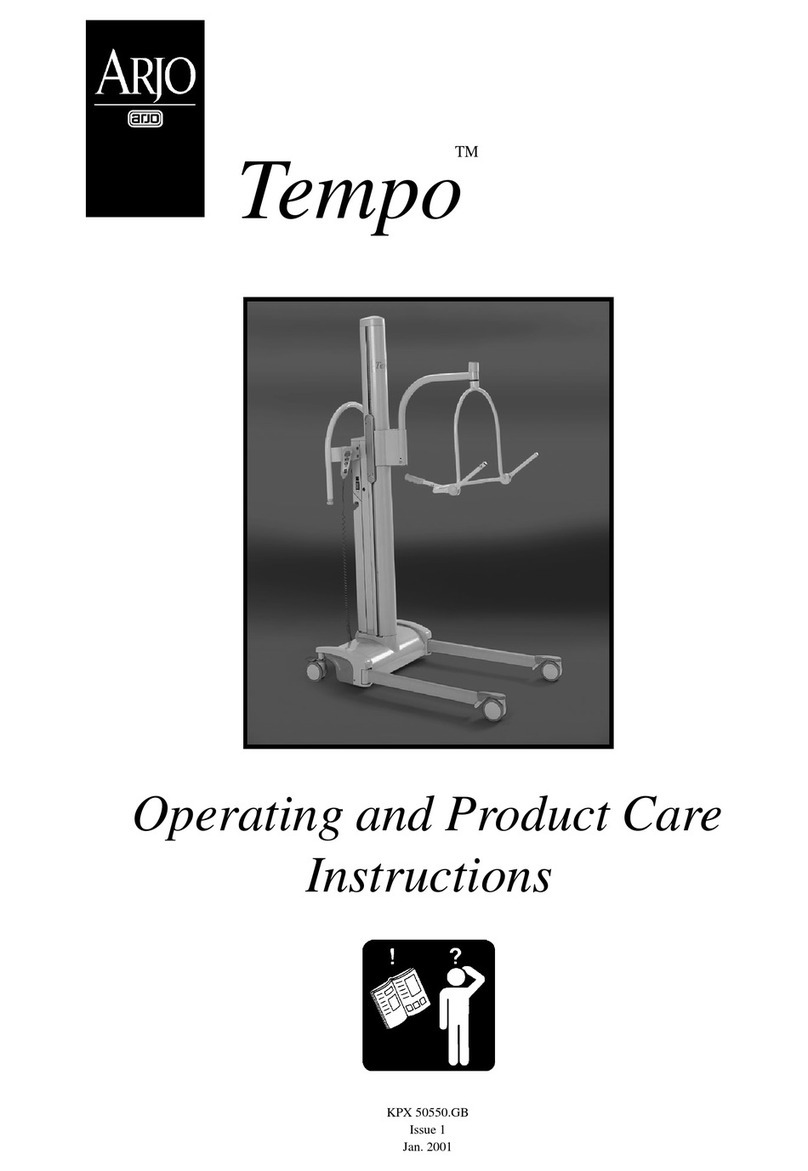
Arjo
Arjo Tempo Installation guide
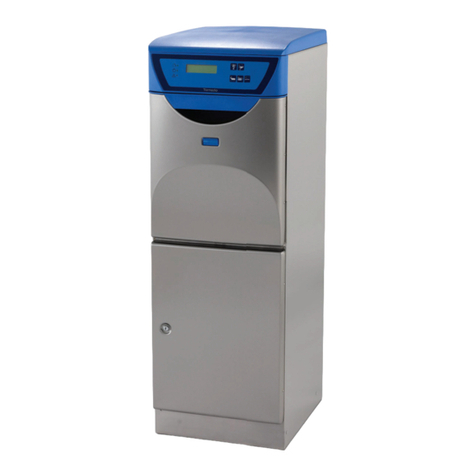
Arjo
Arjo TORNADO FD1800 User manual
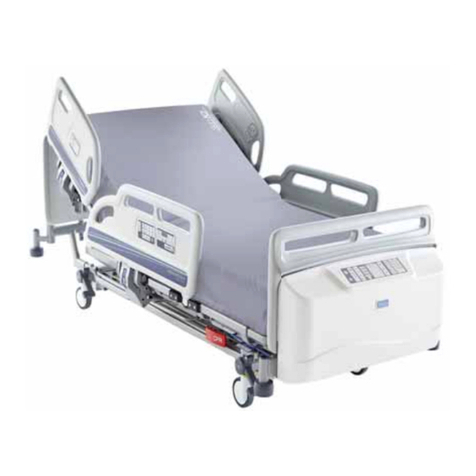
Arjo
Arjo Citadel User manual
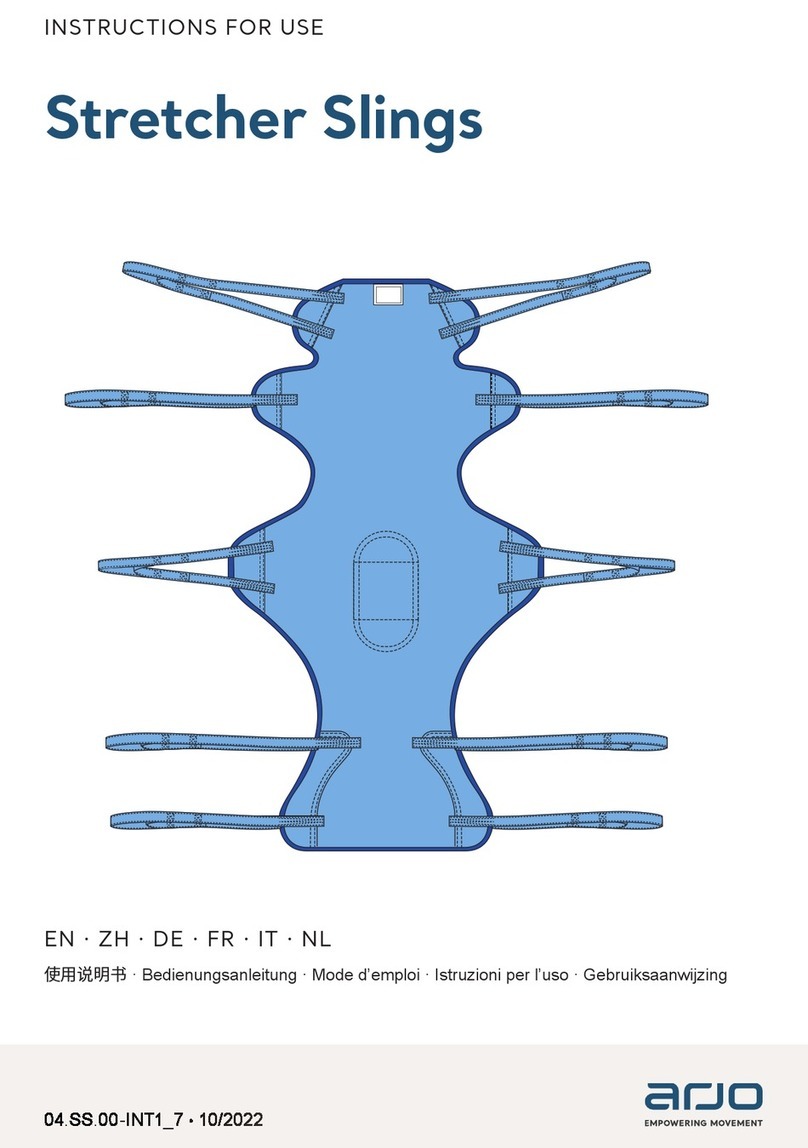
Arjo
Arjo MAA1150 User manual
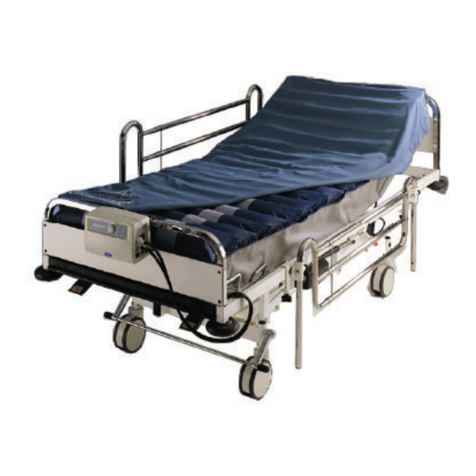
Arjo
Arjo Alpha Active User manual

Arjo
Arjo Alpha Active 4 User manual
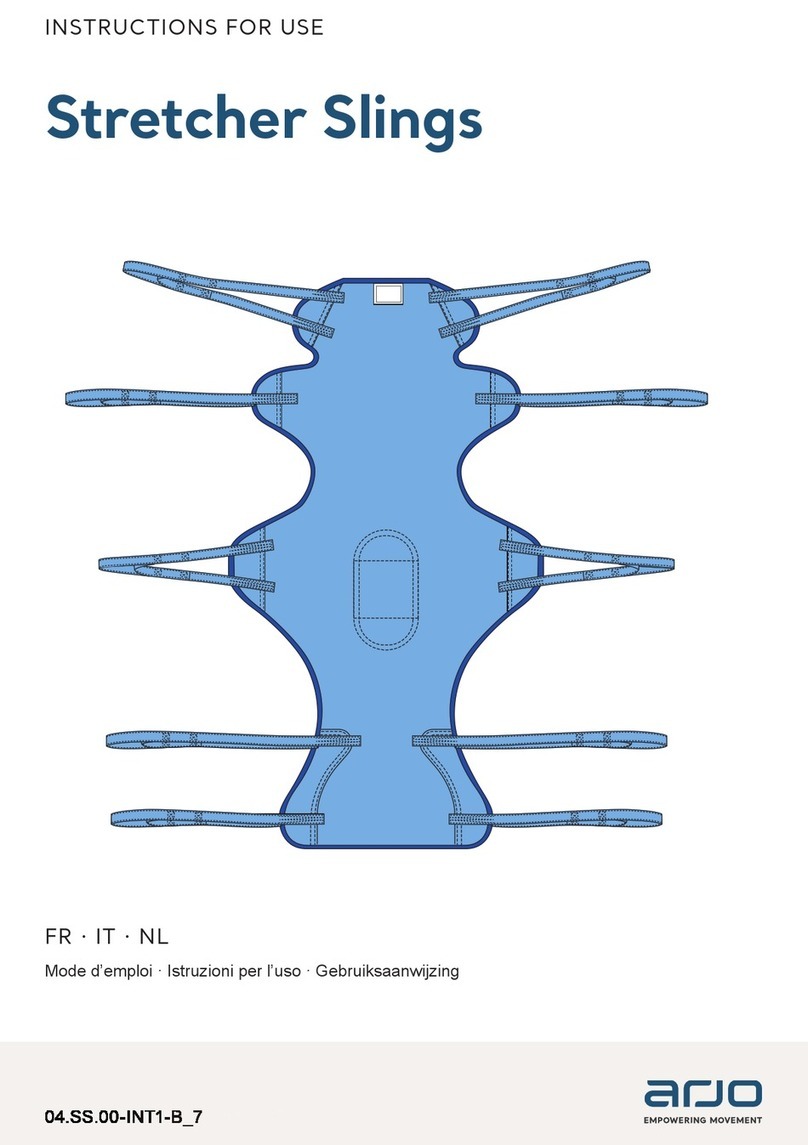
Arjo
Arjo Stretcher Slings User manual

Arjo
Arjo Sara 3000 User manual
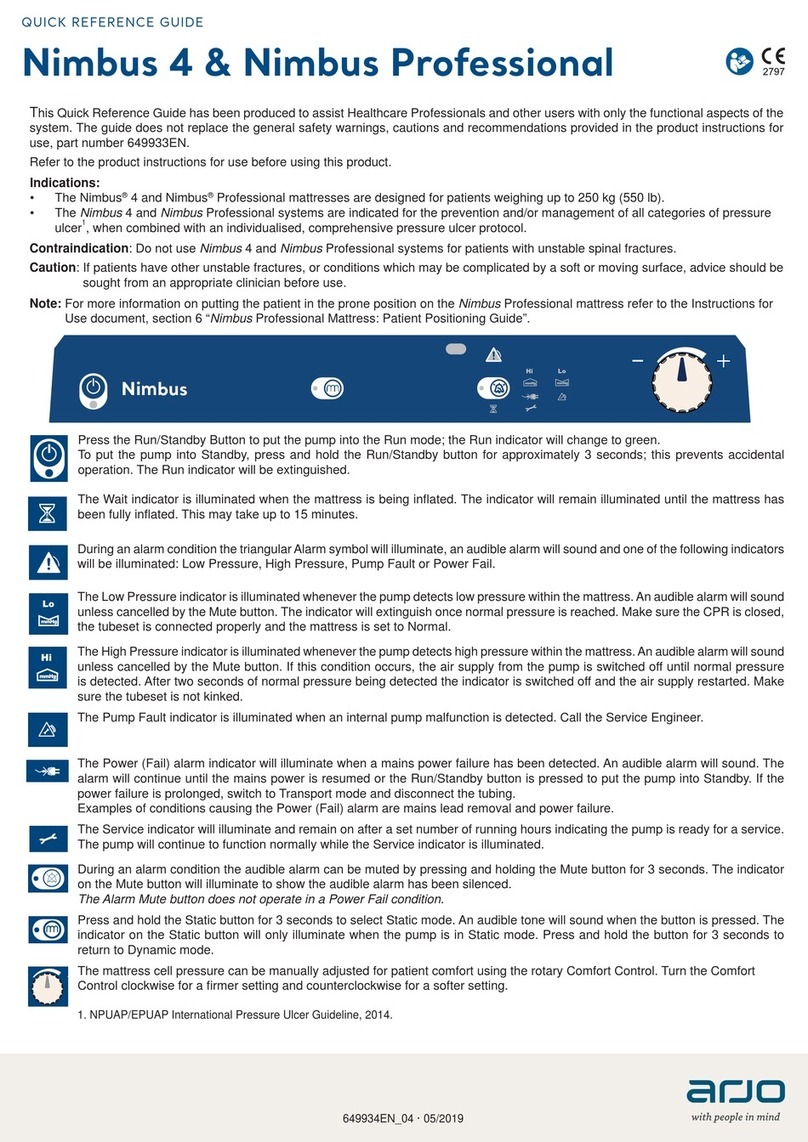
Arjo
Arjo Nimbus 4 User manual
